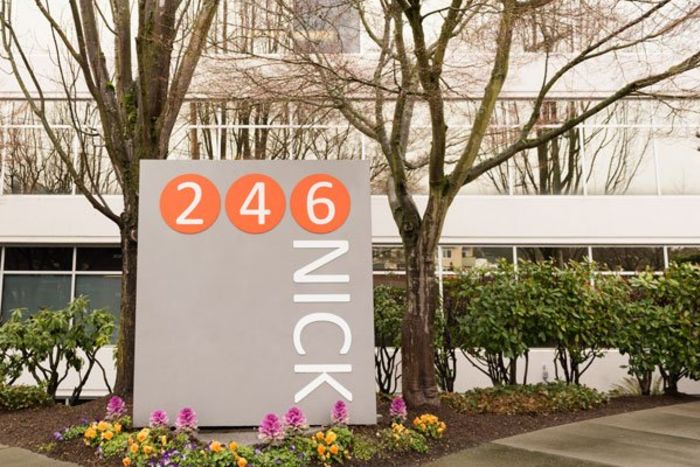Strengths-based treatment empowers clients to direct their own recovery process. This is a departure from many therapeutic modalities, where the focus tends to be on the negative. You analyze unhealthy habits, come to terms with past mistakes, and talk about the problems you’d like to “fix.” This perspective can be very beneficial for some, but it’s not for everyone. The strengths model offers an alternative.
This type of therapy is used to tackle the same issues, but from a more positive perspective. Rather than focusing on their flaws, clients build confidence by growing the skills that serve them best. Strengths-based counseling places an emphasis on the coping mechanisms that got you through difficulties, rather than dwelling on the choices that caused them.
The goal is for you to view yourself with compassion and respect, cultivating a more positive outlook toward your life and the world around you. This reminds you that no matter how hard things were before, you had the skills to get here. You are capable of great things. And you can use your current strengths to develop an even better toolkit for mental health, with skills that will empower you to build a meaningful life.
Strengths-based therapy is both a philosophical perspective and a practical approach to the healing process. In order to understand what happens in this form of treatment, it’s important to know about its underlying ideology.
The Philosophy of Strengths-Based Treatment
This approach is fundamentally different from the more widely used model of medical care. In most medical treatments, for any condition from substance use to cancer, the focus is on treating the “bad” symptoms. If your neck hurts, you might take aspirin. If you twist your ankle, you might wear an ankle brace. This can also be applied to more complex issues: if you have depression, you might see a therapist, or start taking antidepressants. In any of these examples, the primary goal of treatment is to stop you from hurting. This model is a negative feedback loop,1 in which a change in a negative stimulus (such as spraining your ankle), is regulated by making a change in the opposite direction (such as wearing an ankle brace). These simple solutions often work well, but they are not always appropriate for healing complex mental illnesses, such as substance use disorders.
The strengths-based approach, on the other hand, is a positive feedback loop. This type of treatment has similar goals to traditional medical care, but it reaches them by using a very different strategy. Instead of treating negative symptoms, the therapist encourages the client to focus on the positive. You’ll catalogue your own strengths, and learn how your skills have helped you navigate past life experiences. By understanding your own best qualities, you’ll become better equipped to use healthy coping mechanisms in the future. This empowers clients to make choices more intentionally, and to build fulfilling, sustainable lives.
The Medical Model of Care: Fixing Problems
In the case of mental health, negative feedback loops can influence the way clients view themselves and their prospects of recovery. “Traditionally, the mental health arena is highly influenced by the medical model where severe mental illnesses are considered chronic with irreversible neuropathological brain changes and information-processing deficits,” says Huiting Xie, Senior Staff Nurse at the Buangkok View Institute of Mental Health in Singapore in an article on strengths-based approaches for mental health recovery.2 As a result, “Mental health recovery seems like an impossible dream.” The very model we use to determine a course of treatment can sometimes make it difficult for clients to heal.
This common perspective can severely damage the self-esteem of people with mental health diagnoses, which may impede recovery. In fact, research has found that “24% of the people with schizophrenia scored low on self-esteem2 on the Rosenberg self-esteem scale.” This also applies to people with substance use disorders, whether or not they have additional diagnoses. Therapy is intended to cultivate mental health, and not to increase feelings of guilt. Although it’s important to take responsibility for your mistakes, low self-esteem can lead to shame spirals.
This pattern can also cause clients to perform badly in relationships with other people. This results in a lack of community support. Isolation is unhealthy for most people, but especially for those with substance use disorders, who benefit from having a level of public accountability. Strong relationships also help people in recovery build meaningful lives, making plans they can look forward to that don’t include unhealthy behaviors. A lack of community can also make relapse far more likely.
Although the traditional medical model is a very effective way to treat certain disorders, it’s not the only way. For some clients, especially those with mental illness and substance use disorders, it can even be counterproductive. It’s easy to separate one’s identity from physical conditions—you are not your carpal tunnel syndrome. It’s much harder to draw those distinctions when your illness affects your emotions or your behavior. This paradigm can give clients the impression that, just by being themselves, they are a problem that needs to be fixed or isolated from the world. That idea is extremely harmful. Strengths-based treatment can be a lifeline for clients who are engaged in this way of thinking.
Strengths-based therapy has many of the same goals as other treatment modalities. However, those goals are achieved through a very different process. Instead of emphasizing “bad” behaviors, therapists encourage clients to lean into their more positive traits. No matter how hard someone’s life has been, all of us have strengths that have helped us get to this point. In most cases, clients who are starting therapy have made the decision to change. That fact alone is a reason to take pride in yourself.
In strengths-based talk therapy, the therapist guides the client through the process of assessing their own best qualities. Many forms of addiction treatment emphasize “pathology, focusing on problems and failures in people with mental illnesses; the strengths-based approach2 allows practitioners to acknowledge that every individual has a unique set of strengths and abilities that [they] can rely on to overcome problems.” By acknowledging these strengths, the therapist not only encourages the client to do the same; they also provide tangible, memorable evidence they are worthy of praise and respect.
Strengths-based treatment may be helpful for people with a wide variety of diagnoses, including substance use disorders. Research is being done on its efficacy in treating a number of demographics. Like any form of therapy, however, it may not be appropriate for all clients. In some cases, strengths-based therapy is a valuable component of healing, but should be used in combination with other therapeutic modalities.
It’s important to be realistic about recovery of any kind. False hope can be harmful, especially to people who are emotionally triggered by severe disappointment. However, overt pessimism can be equally damaging. The strengths model deals in practical hope. By taking a clear-eyed look at your most positive qualities, you can ground yourself in reality and begin to build a more sustainable life. This therapy has many of the same goals as other treatment modalities; however, those goals are achieved through a very different process.
Strengths-Based Treatment in Practice
The actual process of strengths-based recovery may look and feel different from other types of talk therapy. Because the goal is to empower the client, and not to “fix” them or their problems, therapists use a distinct set of techniques and conversation styles. Clients are encouraged to assess and celebrate their own unique strengths, rather than conforming to a set of values that may or may not resonate with them.
Assessment
In the first stage of strengths-based treatment,3 “case managers engage clients in a process that is the antithesis of most assessments.” Some practitioners don’t even read the client’s complete medical record until after their first meeting. Instead, they meet you in the present moment, listening to your perspective before learning about other healthcare providers’ opinions. This allows them to approach you as a whole person, making space for you to have your own thoughts and feelings about the healing process.
This approach is intended to empower the client. When you’re in the driver’s seat, you learn how it feels to make decisions about your own life. You can begin to build confidence not only by talking about your strengths, but by amassing evidence that you’re capable of making sustainable choices. If you begin this process during your time at an inpatient rehab program, the risks are somewhat mitigated. You can trust that your talk therapist and other healthcare providers will provide feedback if you begin to fall into unhealthy patterns.
After meeting with you and hearing about your experience, the therapist will support you in deciding what your treatment will look like. Unlike many other modalities, clients in strengths-based therapy define their own treatment goals, and decide which services will be used to achieve those goals. You’ll begin by going through a questionnaire to assess your strengths. For some clients, this is their first time consciously considering their own best qualities. This strengths-based assessment3 focuses on your ability to “accomplish a task, use a skill, and have or fulfill a goal in nine life domains,” including life skills, finance, leisure, relationships, living arrangements, occupation/education, health, internal resources, and recovery.
According to experts, by inviting a client to take such an active role in their own recovery, the strengths-based approach can significantly decrease their denial.3 In the act of considering which services will be most effective for them, clients must take an honest look at their own goals, needs, and preferences. By doing this, they begin to come to terms with their current emotional state. They accept their own problems, and immediately link those problems to possible solutions. This process can be less jarring and painful than more traditional therapies, in which the client begins treatment by extensively describing the difficult issues at hand.
Identifying Your Strengths
After the initial intake process, clients go through various strengths-based assessment worksheets4 to help them identify their strengths and skills. This process invites you to take an objective look at your own life experiences and behavioral patterns. For example, one worksheet asks the client to reflect not only on strengths they see in themselves, but on strengths the therapist heard and reflected back to them. Then, the client goes on to list situations in which those strengths were apparent. Every therapeutic process is unique, so your therapist may or may not give you this exact assignment.
Most people in recovery have more strengths than they initially think. They may also have developed coping mechanisms that once felt like negative attributes, which can help them build more sustainable lives. It’s common for people with substance use disorders to find themselves in dangerous or even life-threatening situations, in which they must make split-second decisions. If you were once in a dangerous situation, and made a decision that minimized harm to yourself or someone else, you used a skill to do so. That’s something to be proud of. Going to rehab and engaging in therapy will hopefully help you avoid such difficult dynamics in the future, but you can find ways to use that same skill in situations with lower stakes.
Rehab is an opportunity to develop healthy coping mechanisms. In some forms of treatment, therapists assume that clients are starting from scratch, and unlearning all their current habits to make room for new ones. The strengths model takes the opposite approach. With this type of treatment, you begin by acknowledging and honoring the fact that you already have positive coping mechanisms. Your therapist guides you through the process of honing these skills, and learning to apply them in a healthy and sustainable way.
Self-Empowerment Through Strengths-Based Treatment
The positive philosophy of strengths-based treatment5 has an impact on every aspect of therapy, including interpersonal dynamics. This process is most effective when the therapist and client view themselves as collaborators. Instead of enacting the power dynamic seen in so many therapeutic relationships, the therapist and client interact as equals, honoring each other’s contributions to the conversation.
Over time, this dynamic teaches the client how to build relationships that are based on mutual respect. This practical experience also allows you to create memories of healthy interactions, amassing evidence of your own strengths and skills.
Working as a team, the therapist and client begin to explore skills that have “been historically successful in the client’s life.”5 Clients practice viewing themselves in a more positive light, developing confidence and self-compassion. Experts note that this process reveals clients’ inherent resilience. “In most cases, it is not necessary to teach clients new skills, thoughts or emotional reactions. Instead, therapists can help clients identify the strengths they already possess and build a model of resilience from these existing strengths,” according to Christine A. Padesky and Kathleen A. Mooney, creators of the four-step Strengths-Based cognitive–behavioural therapy (CBT)6 model. “Rather than focus on areas in which the person is not resilient, we advocate in-depth exploration of areas in the person’s life in which they exhibit sustained activity and that are not linked to problem areas.”
It’s important to recognize that behavioral patterns do not exist in a vacuum. Strengths-based therapy also includes an assessment of the client’s external environment and family structure. In many types of therapy, this assessment would be focused on assigning responsibility or even blame to the people in your life, locating the root of your biggest problems. The strengths model, unsurprisingly, has a somewhat different goal. The therapist and client use this information to identify opportunities for the client to seek out external support.
You are not alone in your experiences. Strengths-based recovery practice7 recognizes that community is “an oasis of potential resources,” and a very important component of healing. This applies to your existing community—family, friends, colleagues, etc.—and also to the new community you’ll build during therapy. This community may come from group therapy, support groups, 12-Step programs, family and friends, and other people in your rehab program.
Group Therapy
After arriving at inpatient rehab, clients may or may not get to choose which groups they attend. Of course, your choice of rehab facility may be partially based on which groups are offered. However, you may find that your preferences change after you begin inpatient treatment. Strengths-based treatment gives clients a great deal of control over which types of therapy they engage in. You’ll be empowered to make your own decisions, just as you are in every other aspect of this approach.
Experts note that typically, “the treatment program determines the types of groups clients will attend, the information to be presented, and the perspectives to be used to evaluate the client’s success or failure in treatment. In opposition to that approach, case managers who implement a strengths-based approach will attempt to ensure that clients are in control of their own treatment.”3
By having so much say in what your treatment looks like, you’ll have the opportunity to learn about your own needs. This is an absolutely essential part of healing. The more you know about yourself, the better equipped you’ll be to adopt healthy patterns of behavior. If you can really meet your needs, and do so in a sustainable way, you can start to alleviate self-destructive desires.
You’ll also gain valuable experience in meeting your needs on your own terms. When this process begins in a safe environment like inpatient rehab, you have the freedom to make mistakes and through trial and error. Your actions always have consequences, but any negative effects can be moderated by on-site therapists and medical professionals.
Family Therapy
The principles of strengths-based therapy can also be applied to families. Whether you choose to attend family therapy, or simply discuss your family dynamics in a one-to-one session, this philosophy helps many clients identify ways to heal their relationships. The strengths model encourages clients to approach family members from a place of respect, honoring each person’s contributions.
As Elsie Jones-Smith, of the American Board of Professional Psychology, writes, “The SBT (strengths-based therapy) philosophy toward working with families8 deals with the unique knowledge, competencies, capabilities, and resources of individual family members as well as the family as a whole. Strengths may involve relationships and connection among immediate family members, extended family members, friends, and members of a given community. These strengths can also be found in the family’s unique beliefs, cultural and ethnic heritage, or socioeconomic background.”
This process of honoring each family member’s unique knowledge and history is not intended to ignore problems. It goes almost without saying that family dynamics can contribute to mental illness and substance use disorders. However, it’s not often productive to dwell on wrongdoing. This model avoids placing blame on any individual person or family unit. Instead, it refocuses on the individual and collective skills of the people involved.
By considering the strengths of your family members, and of your family unit as a whole, you may discover new ways to reconnect with the people closest to you. It’s okay to ask for help, and it can be very healthy to seek advice from those you trust. You may find that the people in your life have strengths that are very different from your own. Perhaps you’re great at listening, but your sibling is better at articulating difficult emotions. The two of you could learn a great deal from each other. Strengths-based family therapy might help you do this in a focused way, allowing each of you to feel like an expert while you both practice working as a team.
Participating in a team of any kind can build individual confidence.9 This includes family systems. One study asserts that teamwork “has the ability to enable the members of the team to have a higher level of emotional security, self-confidence and the ability to plan and decide with others positively.” Strengths-based family therapy not only improves group dynamics; it can also empower individual family members in other areas of their lives. This is especially important for people in recovery from substance use. In order to heal your relationships, you must understand your own needs and goals and have a clear sense of what makes your life meaningful.
Holistic Strengths-Based Treatment
The strengths model is intended to treat the whole client, in the wider context of their life and community. Rather than just treating your symptoms, this approach is intended to improve every aspect of life, including self-image, patterns of behavior, and interpersonal dynamics. Although clients are asked to evaluate their personal histories, the focus is on the future.
In order to identify goals, you’ll begin by defining your personal values. For example, if you value adventure and travel, buying a house may not be an appropriate objective. On the other hand, if you value stability more highly, it may be time to let go of dreams of a traveling lifestyle. There’s no one right way to live, but it is possible to find the best possible path for yourself.
Assessing and exercising your strengths can help you understand what a meaningful life looks like for you. You’re also likely to find that even your most difficult past experiences are valuable lessons. No matter where you’ve been, what you’ve done, or whether you regret your past choices, you can be sure that you’ve learned and grown along the way.
Elsie Jones-Smith writes, “Strengths-based therapy10 adheres to the belief that even the most challenging life stories that clients bring to therapy contain examples of their exercise of strengths in their struggle with adversity. For instance, the addict’s or substance abuser’s maladaptive responses may also contain within them the seeds of a struggle for health.” Those seeds contain valuable information about what you valued, even in the darkest times of your life. To extend the metaphor–by planting and watering them, you can develop even better coping mechanisms, nourishing the life you’ve always wanted.
Experts note that people with substance use disorders3 “frequently become adept at making decisions in crisis, with very short-range goals in mind. Although this type of decision-making ability is a strength, recovery and sobriety will also call for the ability to plan and carry out longer-range goals.” When you first begin therapy, it can be difficult to see how your own best qualities came through in the difficult situations you previously encountered. Once you start to recognize your own strengths, you can start to plan for a better future. It’s important for people in recovery to learn how to think about their lives in the long term. And in many cases, this is a new experience.
The Hero’s Journey
Strengths-based therapy positions the client as the hero of their own personal narrative.11 In their book on this approach, John J. Murphy and Jacqueline A. Sparks write “Clients are often portrayed as dysfunctional, passive, and acted upon by the expert counselor’s intervention. Drawing from decades of research that paint a very different picture, SBT acknowledges and honors heroic elements of clients’ lives throughout the course of counseling. These elements include clients’ creativity, wisdom, resilience, and other strengths that contribute to effective therapeutic outcomes.”
The hero’s journey,12 famously defined by Joseph Campbell, is well understood as a literary concept. This detailed framework can be divided into three steps: the departure, the initiation, and the return. In the departure, a person acknowledges a problem that needs their attention, and decides to make changes. During the initiation, they confront the difficult emotions that haunt them, and the decisions that led them this far. Finally, in the return phase, they begin to rebuild their life based on recent revelations.
It’s easy to see how this process relates to that of addiction and recovery. In the case of addiction, the departure occurs when you decide to change your life. This initiation might occur in detox, rehab, or other forms of therapy. The return is the ongoing process of recovery.
Academic researchers are now applying this framework directly to mental health, especially in the context of trauma. In the article “Trauma Recovery: A Heroic Journey,”13 scholars describe how the process of healing from a traumatic experience, such as substance abuse, fits into this paradigm. They conclude that in many cases, “trauma survivors are the living narrative of such heroic tales,” and that “recognizing survivors in this way empowers them to continue to fight bravely for the ability to change their own story.”
In strengths-based therapy, as in the hero’s journey, clients take an active role in their own lives. This process encourages you to develop compassion for your own struggles, and to look forward to a brighter future of your own design. For example, at the New England Recovery Center, clients engage in a “client-centered, strengths-based approach” intended to “motivate them for active participation. Cognitive-behavioral treatment provides clients the necessary tools for achieving and sustaining recovery. Concepts and skills learned during the initial stages of addiction treatment are continuously emphasized and practiced on a daily basis.”
Developing the Strength to Change
In strengths-based therapy, the client is positioned as an expert. The therapist trusts you to make your own decisions and to implement your skills. By learning how it feels to be trusted, you’ll begin to trust yourself, either again or for the first time.
When you trust yourself to make good decisions, you’re far better equipped to navigate difficult situations. Strength-based therapy offers you the emotional space you need to build healthier coping mechanisms, and to use them even when you encounter triggers. This strategy is a powerful way to build confidence and start working toward a better life.
If this type of therapy feels right for you, you can learn more about the rehabs that offer strengths-based treatment here.



















